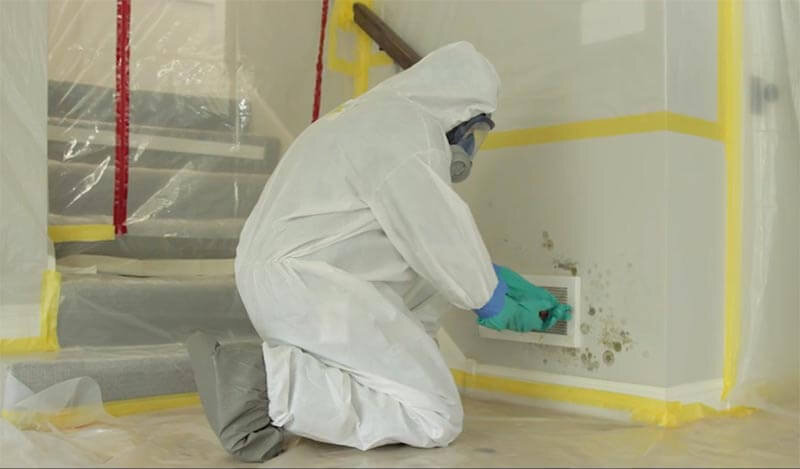Effective Article Mold And Mildew Removal Solutions for Your Home
Mold and mildew development in homes can be a consistent problem, usually calling for an organized strategy for reliable post-remediation options. From comprehending the aspects that contribute to mold development to implementing proper cleansing strategies and wetness control steps, the process can be elaborate yet essential for maintaining a healthy and balanced living atmosphere. Furthermore, exploring all-natural removal services and establishing a regular for continuous maintenance are essential parts of a detailed mold removal method. As house owners strive to address mold and mildew worries, finding one of the most effective solutions ends up being vital for the well-being of their households.
Understanding Mold Development Variables
The primary factor contributing to mold development is dampness. Mold and mildew spores call for dampness to prosper and sprout, making moist or damp environments very at risk to mold and mildew invasions.

In addition, air movement and light direct exposure can influence mold and mildew development. Areas that do not have correct ventilation and all-natural light are a lot more prone to mold and mildew advancement. By addressing these factors adequately, individuals can successfully reduce mold and mildew growth and guard their living atmospheres.
Proper Mold And Mildew Cleaning Strategies
Using effective cleansing approaches is necessary in preventing the reoccurrence and resolving of mold contamination in interior settings. When handling mold and mildew, it is vital to prioritize security by wearing protective gear such as handwear covers, goggles, and masks. The very first step in proper mold cleansing is to contain the affected location to avoid the spread of spores to uncontaminated areas. This can be accomplished by sealing the space and using air scrubbers or unfavorable air equipments to maintain air quality.

Carrying Out Dampness Control Measures
To efficiently stop mold and mildew development and contamination in indoor environments, carrying out dampness control actions is paramount. Wetness is the main aspect that gas mold and mildew development, making it vital to take care of moisture degrees within the home. One reliable measure is to use dehumidifiers to preserve interior moisture degrees listed below 60%. In addition, guaranteeing appropriate air flow in locations vulnerable to moisture build-up, such as restrooms and kitchen areas, can aid decrease the danger of mold and mildew growth. Consistently examining and repairing any kind of leakages in plumbing, roof coverings, or home windows is also vital in protecting against excess wetness build-up. Making use of exhaust followers read the full info here while cooking or bathing, and allowing air flow by maintaining furnishings slightly far from wall surfaces can aid in dampness control. Additionally, making use of moisture-resistant products in high-humidity areas, such as mold-resistant drywall and paints, can be beneficial. By diligently applying these moisture control steps, home owners can efficiently decrease the chance of mold recontamination and preserve a healthy and balanced indoor setting.
Using Natural Removal Solutions
After effectively implementing dampness control measures to avoid mold development in interior environments, home owners can currently explore the efficiency of natural remediation remedies in preserving a healthy and balanced home. All-natural remediation remedies make use of ecologically pleasant methods to deal with mold and mold, making them a preferred option for those looking for non-toxic options. One such service is making use of vinegar, a natural antimicrobial agent, to disinfect and tidy surfaces infected by mold. Merely weaken vinegar with water and spray it onto the impacted areas, enabling it to sit for a couple of hours prior to wiping tidy. Furthermore, tea tree oil, recognized for its antifungal buildings, can be combined with water and sprayed onto mold-infested surface areas to hinder more growth. One more all-natural alternative is hydrogen peroxide, which can efficiently eliminate mold and mildew on mold inspection and removal numerous surfaces without leaving hazardous residues behind. By integrating these natural removal solutions into their cleaning routines, property owners can successfully combat mold growth while promoting a healthier interior atmosphere for themselves and their households.

Maintaining a Mold-Free Atmosphere
On a regular basis inspecting areas susceptible to mold and mildew development, such as bathrooms, cooking areas, attics, and cellars, is important. Proper air flow in locations with high humidity degrees is additionally key to preventing mold and mildew growth.
Furthermore, maintaining cleanliness in the home is crucial for mold and mildew prevention. Keeping interior plants in check and ensuring appropriate water drainage in exterior landscaping can reduce wetness accumulation, reducing the possibility of mold invasions.
Verdict
In conclusion, it is necessary to address mold and mildew development elements, use correct cleaning techniques, apply wetness control steps, make use of all-natural remediation services, and maintain a mold-free setting in order to successfully handle post mold removal in your house - Post Remediation verification. By following these methods, you can avoid mold and mildew from persisting and make sure a healthy living environment for you and your household
The key factor contributing to mold growth is moisture. Mold spores call for dampness to prosper and sprout, making moist or wet atmospheres extremely at risk to mold and mildew infestations.To efficiently stop mold and mildew development and contamination in interior settings, implementing moisture control steps is vital. Furthermore, making certain proper ventilation in areas prone to moisture buildup, such as restrooms and kitchen areas, can assist minimize the danger of mold and mildew development.After efficiently applying dampness control measures to prevent mold growth in indoor settings, homeowners can now explore the efficiency of all-natural removal solutions in investigate this site maintaining a healthy living area.